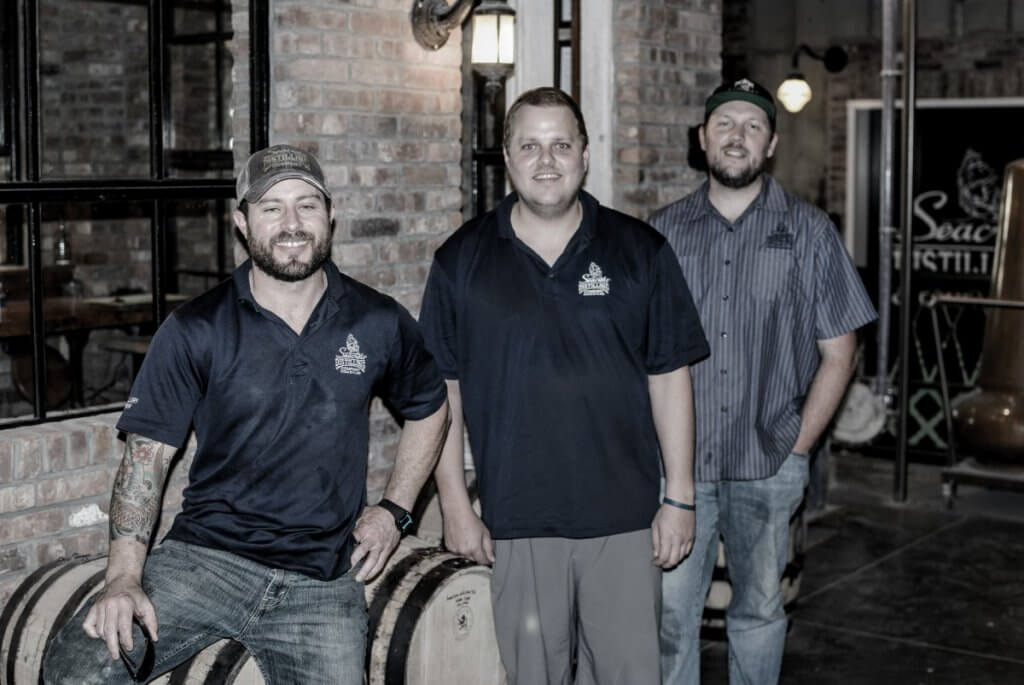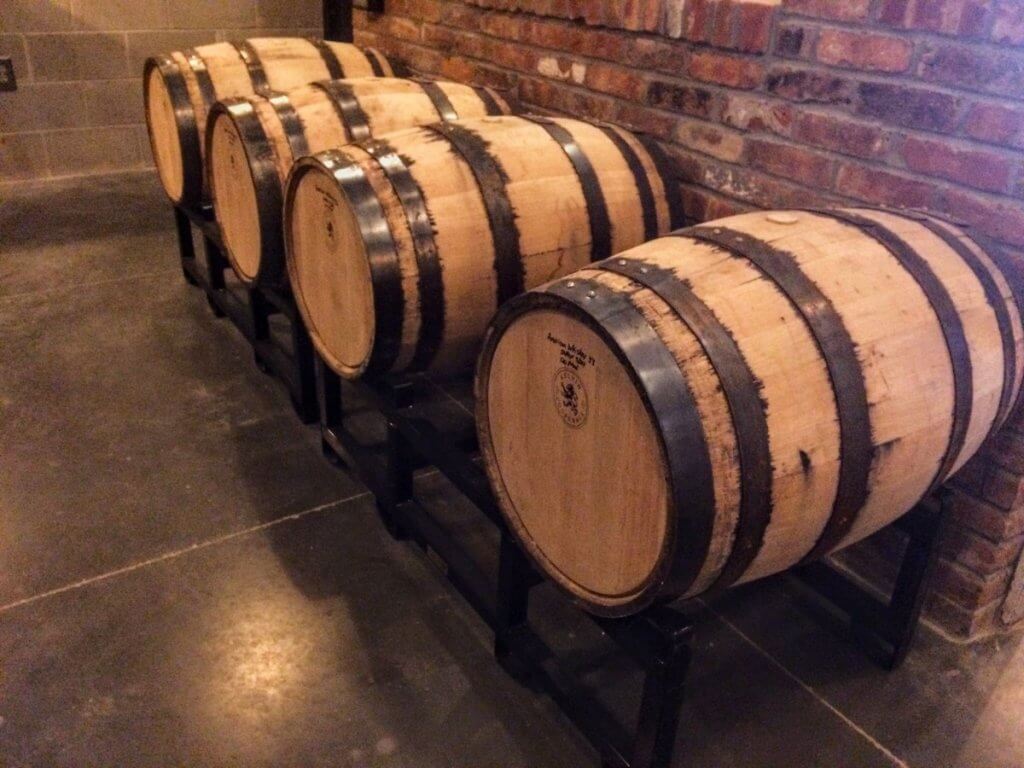Cody Miller, head distiller for Seacrets Distilling Company in Ocean City, Md. tests the aroma of one of his recently distilled whiskies. I had asked him about the “new whiskey” aroma I got out of some of the more recent, hip, whiskeys and he was trying to parse out my poor understanding of the process. Cody went from bar back to head distiller in what seems like a short time, but he was on another, longer road for awhile first.
When I met him he was the new cellerman at Burley Oak in Berlin. He was in charge of washing kegs and cleaning up. He did this for beer and knowledge for a long time, but then came on and started brewing. He had come to Burley as a homebrewer, so he had a sense of the process, but not of the scale.Throughout the whole time he continued his job at Seacrets, working as a barback. It was a job he held for nearly two decades. It was a job he was doing when he got his first big break, and it was the only one he needed.
Cody heard that Seacrets was considering getting into the distilling business. Unlike beer, it isn’t 100 percent legal to distill your own spirits at home, but since the processes is nearly identical, Cody knew he had the experience to be at least a help. He went to Seacrets owner, Leighton Moore and asked if he could be any help with the new distillery. The next thing he knew, Cody was shipped off to Delaware Distilling, where the Seacrets spirits would be distilled during construction, to begin learning the art of distilling
Distilling, if you’re not familiar, is brewing with an extra step. You choose malts, boil the sugars out of them, and add yeast to make alcohol. Once the fermentation process is done, you essentially boil off almost everything that isn’t pure alcohol through the distilling process. After that, it gets tricky. Essentially most distilled products are what we call vodka and the flavors are added later. With whiskey, the flavor comes from a combination of the malts that are distilled and the barrels in which it is stored. Gin is vodka that is flavored during the distillation process. Rum is distilled from molasses rather than malted grains.
Since he spent so much time brewing Cody had a better than average idea about how to mix malts and different additives to result in a specific post-fermentation flavor. It gave him a leg up when he started, but there was a lot to incorporate when it came to the final product.
All the Matts

Cody’s first big success with in making gin. There are two ways to make it. In the first, you put a basket filled with juniper berries and whatever other essences you’re trying to get into a basket and the distillation process picks up the flavor as the alcohol steam comes through it. Cody went with a processes called maceration, wherein you extract the flavors with alcohol during the distilling process.
The tricky part comes when you have to separate heads, hearts and tails, the parts of the alcohol. It is the true art of distilling, done by scent and then taste, you have to pour off the poison parts of the alcohol, if you’ve ever heard of people going blind from moonshine, it is because they were drinking “heads.” The “hearts” are the good stuff, the best tasting and the purest. The “tails” are the dregs, but also what gives character to the alcohol. The trick is to add enough to make your spirits distinctive, but not so much that they are gross.
The conversation started with Cody and I talking about how a lot of new distilleries have super-odd flavors. I thought it was from the tails, but Cody had a different theory.
Whiskey, especially, ought to be aged over a long period of time. Lots of distilleries quick-age their whiskey by using smaller barrels (which have a greater surface area to spirit ration). The smaller barrels make it taste like whiskey faster, but it tastes weird, like (I think) chocolate or cherry, but not in a good or purposeful way.
Take your time

Seacrets whiskies are aged in large oak barrels and will take years. Cody won’t be able to bottle the first whiskey he distilled on his own until after 2020. He does go to the storage facility every month or so and take a nip to see how it is coming along.
The immediate satisfaction for him comes in making gins and flavored vodkas. His first gin was a home run, and has become Secrets’ mainstay gin. He’s won prizes for his Lemon Drop vodka and his Grapefruit rum. The takeaway, I think, is that he’s getting enough of the short-term stuff right, that when the long term stuff comes out it will be worth the wait.

Loved the article Tony. We were there recently and had the opportunity to take this tour and meet Mr. Leighton Moore great place
Tony. I thought the article came off a little rough when you stated Cody was only a Barback at Seacrets for many years. It was like, what the hell does he known about the Distilling of liquors. You brought the article full circle. Nice job.
Leighton has the ability to find people that have a great “motor”. A drive! He gives them the chance to prove themselves. Most of the main staff at Seacrets started out as Barbacks, doorman, bartenders. Leighton didn’t start out owning Seacrets. His Dad busted his ass to see if leighton had what it took to run a motel. It wasn’t given to him. He earned it. His Dad did think that Leighton was a little to soft on his employees. His employees probably thought differently.
Leighton saw a drive in Cody, A motor! Cody turned it on a ran with it. Respect!